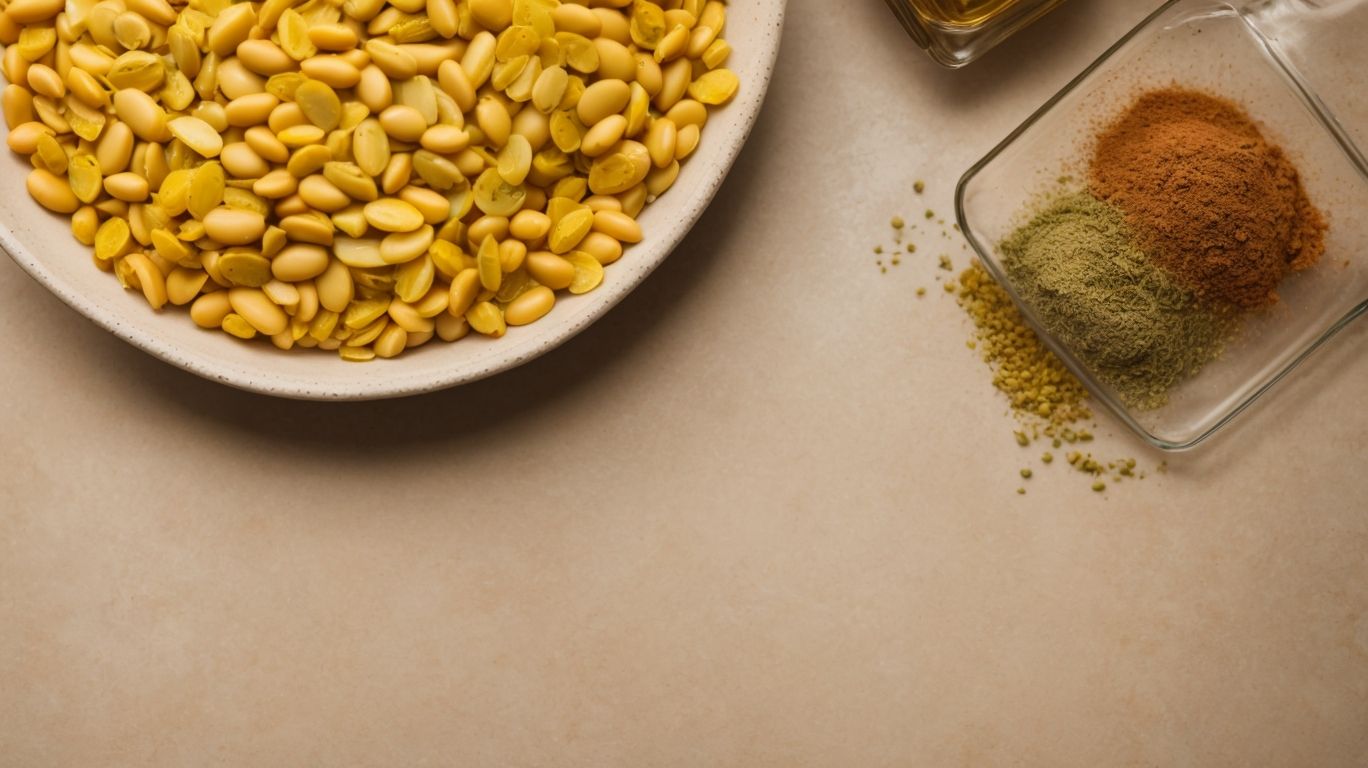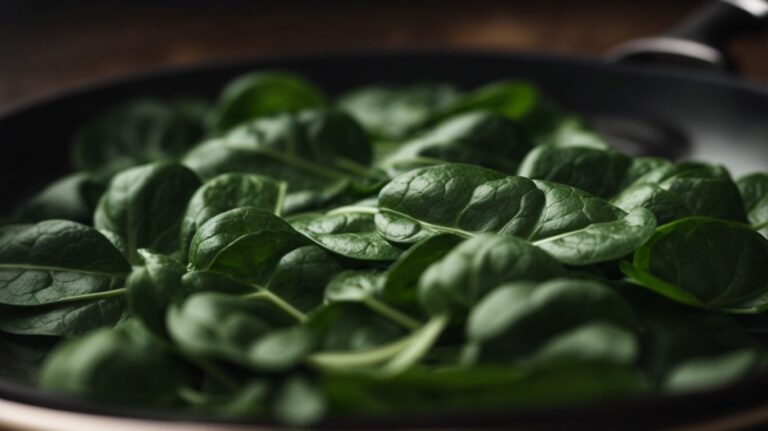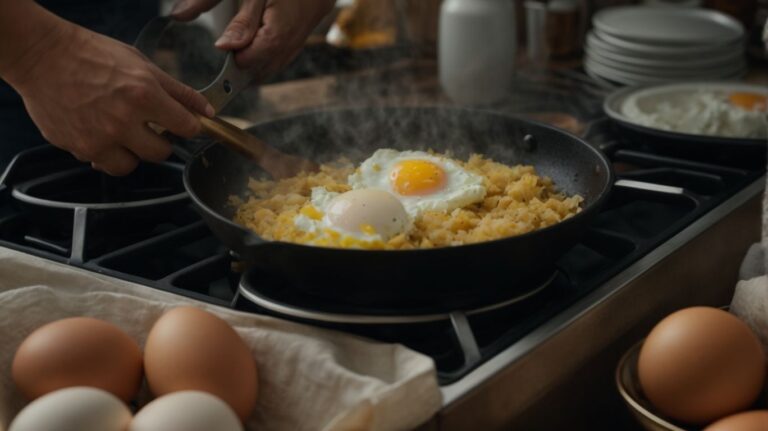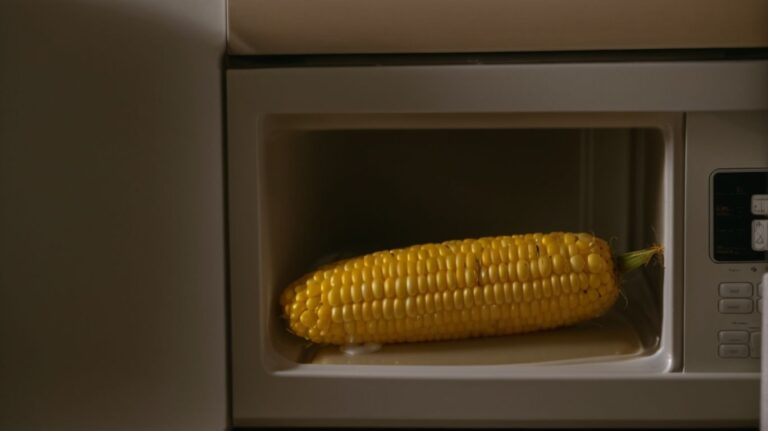How to Cook Yellow Beans?
Looking to add a burst of color and flavor to your meals? Yellow beans might be the perfect addition to your kitchen repertoire.
We will explore everything you need to know about these vibrant legumes – from their nutritional benefits to how to choose, store, prepare, cook, and serve them. Whether you prefer boiling, steaming, sautéing, roasting, grilling, stir-frying, or pressure cooking, we’ve got you covered.
Dive into the world of yellow beans and discover the endless culinary possibilities they offer!
Key Takeaways:
About Yellow Beans
Yellow beans, also known as wax beans, are a vibrant and flavorful vegetable that adds a pop of color to any dish.
These slender beans are pale yellow in color with a crisp texture, offering a slightly sweet and nutty flavor profile that pairs well with a variety of ingredients. Whether sautéed, steamed, or added to salads or stir-fries, yellow beans bring a delightful crunch and visual appeal to your meals. They retain their bright color even after cooking, making them a visually appealing addition to any plate. With their versatility in both raw and cooked dishes, these beans are a delightful option to enhance the flavors and textures of your culinary creations.
What Are Yellow Beans?
Yellow beans, or wax beans, belong to the legume family and are characterized by their slender shape, tender texture, and mild, slightly sweet flavor.
These beans are commonly mistaken for green beans due to their similar appearance, but they differ in color, with yellow beans having a vibrant yellow hue that adds a pop of color to dishes. When cooked, yellow beans retain their bright color and firm texture, making them ideal for stir-fries, salads, and vegetable medleys. The taste of yellow beans is refreshing and delicate, with a subtle earthiness that complements a wide range of ingredients. Rich in nutrients, yellow beans are a nutritious addition to any diet, offering fiber, vitamins, and minerals. Fresh yellow beans should be plump, crisp, and without blemishes, ensuring optimum flavor and texture when prepared.
What Are the Nutritional Benefits of Yellow Beans?
Yellow beans offer a powerhouse of nutrition, packed with essential vitamins such as vitamin C, fiber for digestive health, and a low-calorie content suitable for various dietary needs.
These beans are not only rich in vitamin C, a vital nutrient for immunity and skin health, but also provide a good dose of fiber, which supports gut function and helps in maintaining a healthy weight. What makes yellow beans even more appealing is their low-calorie profile, making them an excellent choice for those looking to manage their weight or control their caloric intake.
How to Choose and Store Yellow Beans?
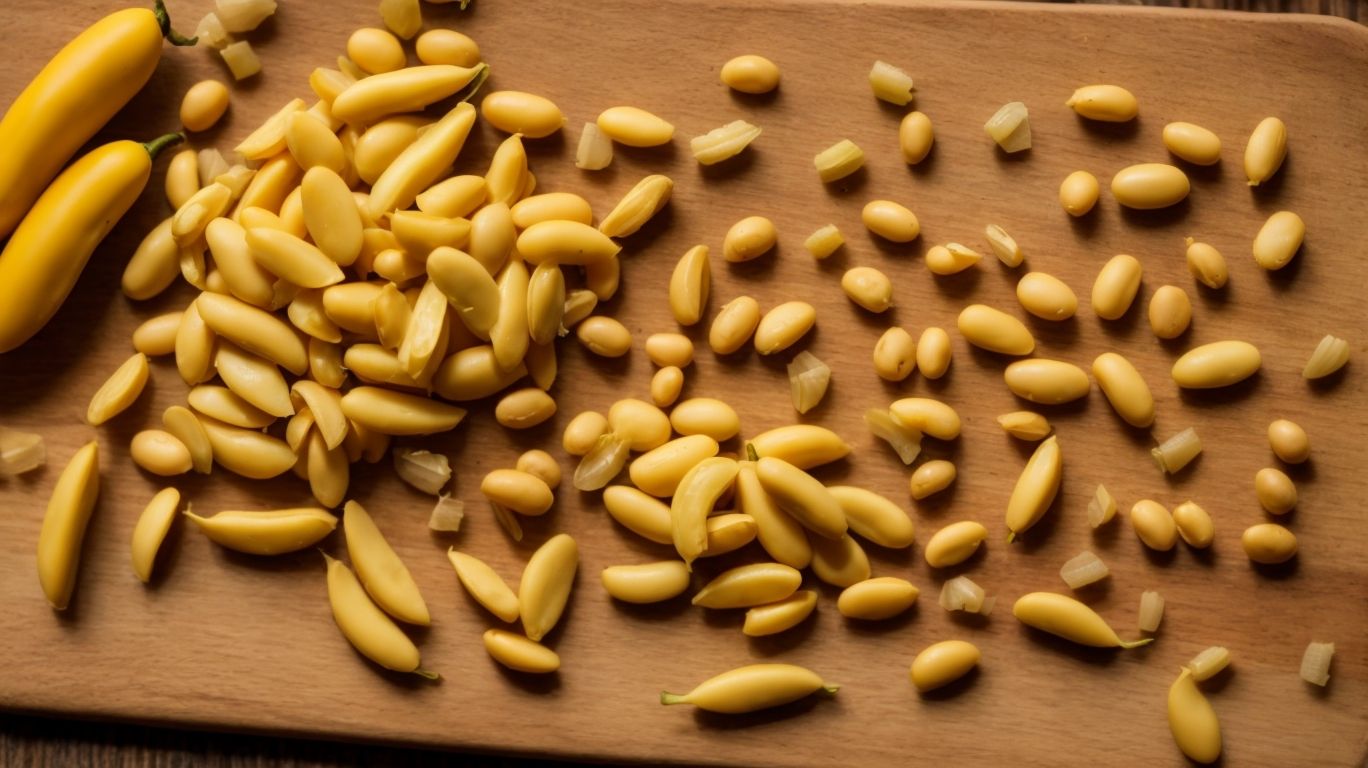
Credits: Poormet.Com – Terry Williams
Selecting and storing fresh yellow beans is essential to preserve their flavor and texture for delicious culinary creations.
When choosing ripe yellow beans, look for ones that are firm, free of blemishes, and vibrant in color, preferably from a local farm stand or farmers market where they are likely to be fresher. To ensure the beans stay fresh for longer, store them unwashed in a perforated plastic bag or container in the refrigerator crisper drawer. Avoid washing the beans until you are ready to use them to prevent spoilage. Before cooking, trim the ends of the beans and enjoy them in stir-fries, salads, or as a simple side dish.
How to Choose Fresh Yellow Beans?
When selecting fresh yellow beans, look for beans that are vibrant in color, firm to the touch, and free from blemishes or signs of wilting.
These visual and tactile cues indicate the beans’ freshness and quality. The vibrant color of the beans suggests that they are rich in nutrients, making them ideal for a variety of dishes. Ensuring freshness is crucial for enhancing the flavor profile of your recipes, so opt for beans with a crisp texture and a glossy appearance.
To prepare these yellow beans, consider trimming the ends and blanching them in salted water for a few minutes until they are tender yet still slightly crunchy. This cooking method helps to retain their vibrant color and nutrients, resulting in a delicious addition to salads, stir-fries, or simply enjoyed on their own.
How to Store Yellow Beans?
To store yellow beans properly, place them in a perforated plastic bag in the refrigerator’s crisper drawer to maintain their crispness and flavor.
It’s essential to ensure that the yellow beans are dry before storing to prevent moisture buildup, which can lead to spoilage. Additionally,
- Do not wash the beans until you are ready to use them, as excess moisture promotes decay.
- Avoid storing yellow beans near ethylene-producing fruits like apples or bananas, as this can hasten ripening and spoilage.
By following these simple steps, you can extend the shelf life of your yellow beans and enjoy their fresh flavor and texture for a longer duration.
How to Prepare Yellow Beans for Cooking?
Preparing yellow beans for cooking involves simple steps like washing, trimming, and blanching to enhance their color, texture, and taste.
First, begin by rinsing the yellow beans under cold water to remove any dirt or debris. Next, carefully trim off the stems and any blemishes from the beans. Then, bring a pot of water to a boil and add a pinch of salt. Once the water is boiling, blanch the beans by placing them in the boiling water for just a few minutes until they turn bright green. Immediately transfer the beans to an ice bath to stop the cooking process and lock in their vibrant color. Now, your yellow beans are ready to be added to salads, stir-fries, or enjoyed as a nutritious side dish.
How to Wash Yellow Beans?
Before cooking, wash yellow beans under cold running water to remove any dirt or residue, ensuring they are clean and ready for the next steps.
Once the yellow beans are thoroughly washed, soak them in a large bowl of water for about 1-2 hours. This process helps to soften the beans and reduce the cooking time. After soaking, drain the beans and rinse them one more time.
Preparation is key in making sure your dish turns out flavorful and delicious. Now, the yellow beans are ready to be added to your favorite recipes, whether you’re making a classic bean salad or a hearty stew.
How to Trim Yellow Beans?
Trimming yellow beans involves snipping off the ends with a knife or kitchen shears, ensuring uniformity in size and removing any tough stems.
By meticulously trimming the yellow beans, you ensure that they cook evenly, avoiding any unpleasant crunch from undercooked stems. The consistent size achieved through this process also helps in maintaining a harmonious texture throughout the dish. When the tough stems are removed, the beans become more tender and enjoyable to eat. This attention to detail not only enhances the visual appeal of the dish but also ensures a delightful culinary experience for those indulging in it.
How to Blanch Yellow Beans?
Blanching yellow beans in boiling water briefly and then plunging them into an ice bath helps retain their vibrant color and crisp texture.
This process stops the enzymatic activity that can lead to color loss and textural degradation, making the beans more visually appealing and enjoyable to eat. Not only does blanching preserve the color and taste of the beans, but it also helps to clean them thoroughly, removing any dirt or bacteria on the surface.
How to Cook Yellow Beans?
Cooking yellow beans offers a variety of delicious options, from boiling and steaming to sautéing and roasting, each method enhancing their natural flavors.
When boiling yellow beans, it helps retain their vibrant color and tender texture, making them a perfect addition to salads or soups.
Steaming, on the other hand, preserves their nutrients while keeping a slight crunch, ideal for a healthier side dish.
Sautéing yellow beans with garlic and seasoning of choice brings out a rich, savory flavor, complementing main dishes beautifully.
Boiling Yellow Beans
Boiling yellow beans in salted water until tender yet crisp is a classic cooking method that preserves their natural flavor and vibrant color.
Seasoning the water with salt not only enhances the beans’ taste but also helps them retain their structure during the cooking process. It’s crucial to add the pepper towards the end to avoid overpowering the delicate bean flavor. The optimal cooking time can vary depending on the freshness of the beans, with around 5-7 minutes usually being sufficient for achieving the desired texture.
Yellow beans are not only delicious but also packed with essential nutrients like fiber, vitamins, and minerals that make them a valuable addition to a balanced diet. Ensuring that they are cooked just right allows you to enjoy their full nutritional benefits.
Steaming Yellow Beans
Steaming yellow beans over simmering water is a gentle method that retains their crunchiness and nutritional value while enhancing their natural sweetness.
By preserving their crisp texture, steaming ensures that yellow beans maintain a delightful crunch, making them a delicious addition to salads and stir-fries. Not only does steaming lock in essential vitamins like vitamin C and vitamin K, but it also limits nutrient loss compared to other cooking methods.
The process of steaming is a quick and simple preparation technique that requires minimal effort, making it a convenient option for adding a healthy touch to meals. Embrace the benefits of steaming yellow beans and enjoy a dish that is both nutritious and flavorful.
Sautéing Yellow Beans
Sautéing yellow beans in garlic butter with a sprinkle of seasoning brings out their flavors and creates a savory side dish that complements any meal.
When sautéing yellow beans, it’s essential to start by heating a pan with a drizzle of olive oil.
Once the oil is hot, add minced garlic cloves for that aromatic base. Be mindful not to burn the garlic, as it can turn bitter. The key is to let the garlic infuse its flavor into the butter without overcooking it.
A squeeze of fresh lemon juice towards the end adds a burst of freshness, balancing the richness of the butter. Seasoning options can vary from a simple sprinkle of salt and pepper to incorporating herbs like thyme or parsley for added depth.
Roasting Yellow Beans
Roasting yellow beans with a drizzle of olive oil and a sprinkle of salt and pepper gives them a delightful crispy texture and caramelized flavor.
For the perfect roast, ensure that the yellow beans are spread out evenly on a baking sheet to allow for even cooking. The microwave can also be used for a quicker roasting process; simply place the seasoned beans on a microwave-safe plate and zap them for a couple of minutes. This method can still yield that desired crispy exterior. The key to achieving a well-rounded flavor profile lies in monitoring the beans as they roast, adjusting the time and temperature to strike that balance between texture contrast and flavor development.
Grilling Yellow Beans
Grilling yellow beans on a hot grill imparts a smoky char and depth of flavor, making them a delicious addition to summer herb-infused dishes.
Yellow beans are perfect for grilling as they hold up well to the heat, retaining a slight crunch while still absorbing the smoky notes from the grill. To enhance their flavor further, consider pairing them with fresh basil and a squeeze of lemon for a zesty kick. These herbaceous elements complement the natural sweetness of the beans, creating a harmonious blend of savory and citrusy flavors. Whether served as a standalone side dish or mixed into salads, grilled yellow beans are sure to be a hit at your next summer gathering.
Stir-frying Yellow Beans
Stir-frying yellow beans with garlic and a medley of colorful vegetables creates a vibrant and nutritious dish that bursts with freshness and flavor.
The key to a successful stir-fry is high heat and constant tossing, ensuring that the ingredients cook quickly while retaining their crisp texture. In traditional stir-frying, garlic is often one of the first aromatics to hit the sizzling pan, infusing the oil with its pungent fragrance. This flavorful base sets the stage for adding the star ingredient – the yellow beans, which benefit from the quick cooking method to preserve their natural sweetness and crunch.
Pressure Cooking Yellow Beans
Pressure cooking yellow beans ensures a fast and efficient way to tenderize them while locking in their nutrients and natural flavors.
This cooking method preserves more vitamins compared to traditional boiling or soaking methods. By sealing the pot, pressure cooking retains water-soluble vitamins like B vitamins and vitamin C that are often lost through other cooking techniques. Yellow beans also contain essential nutrients such as fiber, protein, and minerals, which the pressure cooking process helps to maintain. The speed of pressure cooking reduces overall cooking time, making it a convenient choice for those looking to prepare a nutritious meal in no time.
How to Serve Yellow Beans?
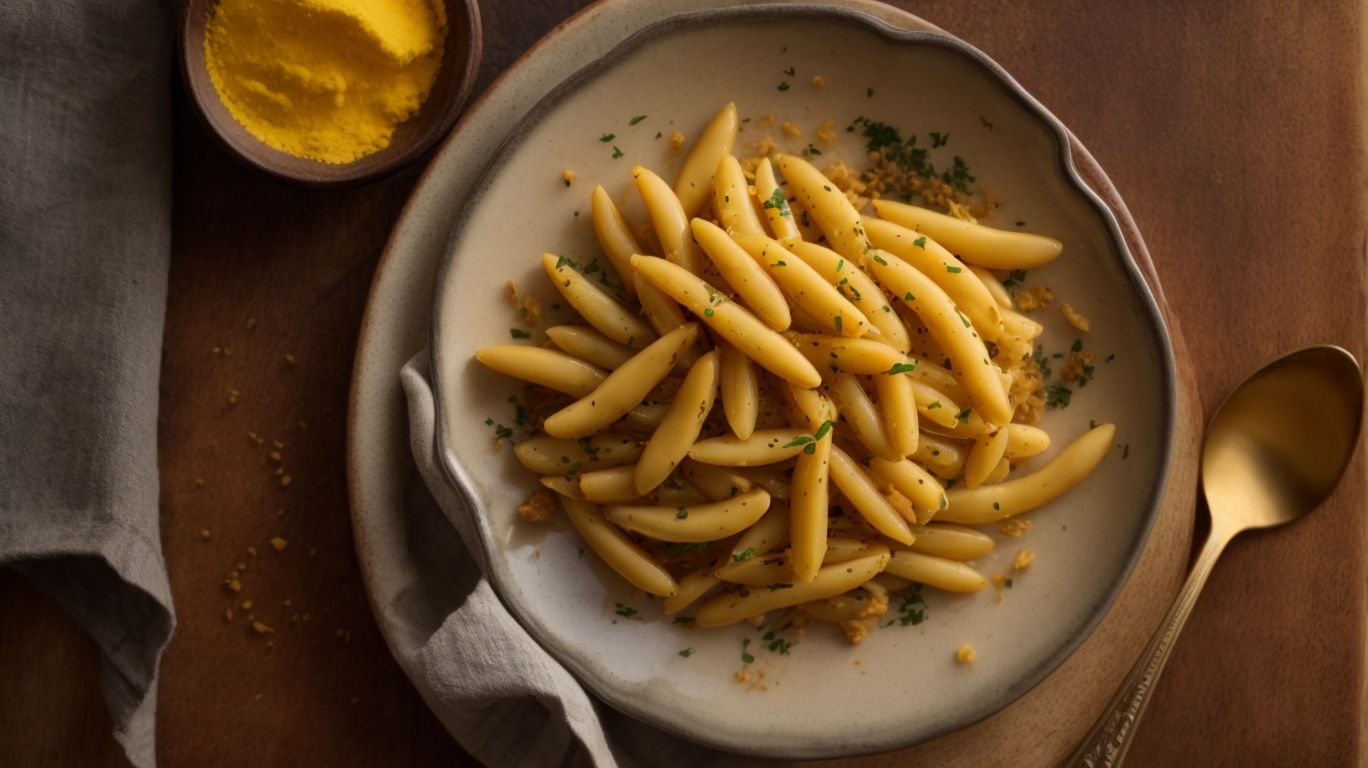
Credits: Poormet.Com – Lawrence Wilson
Yellow beans are a versatile vegetable that can be served as a side dish, added to salads, or incorporated into main courses for a burst of color and nutrition.
When serving yellow beans as a side dish, consider lightly steaming or sautéing them with a touch of olive oil and garlic to enhance their natural flavor and preserve their crisp texture.
For salads, mix blanched yellow beans with cherry tomatoes, feta cheese, and a balsamic vinaigrette dressing for a refreshing and vibrant dish that’s perfect for summer.
In main courses, yellow beans can be a star ingredient in stir-fries, pasta dishes, or even casseroles, providing a nutritious boost with their high fiber and antioxidant content.
What Dishes Can You Add Yellow Beans To?
Yellow beans can be a delightful addition to salads, pasta dishes, stir-fries, and casseroles, elevating the flavor and texture of the overall meal.
They are a versatile ingredient that can be used in both hot and cold dishes, adding a pop of color and a nutritious element. In salads, they bring a fresh crunch, while in pasta dishes, their creaminess complements rich sauces perfectly. Yellow beans also work well in stir-fries, soaking up the flavors of sauces and spices. When added to casseroles, they provide a hearty touch and contribute to a well-balanced and satisfying meal.
How to Store Leftover Cooked Yellow Beans?
To store leftover cooked yellow beans, place them in an airtight container in the refrigerator, ensuring they are consumed within a few days for the best quality.
If you want to freeze the cooked yellow beans for a longer period, they can be stored in a freezer-safe bag or container. Be sure to label the container with the date to keep track of freshness. When reheating the beans, microwaving them for a short period with a sprinkle of water can help retain their moisture. Consider adding extra seasonings or toppings when reheating to enhance the flavor profile. Yellow beans are not only tasty but also a good source of fiber and vitamin A, making them a nutritious option for any meal.

